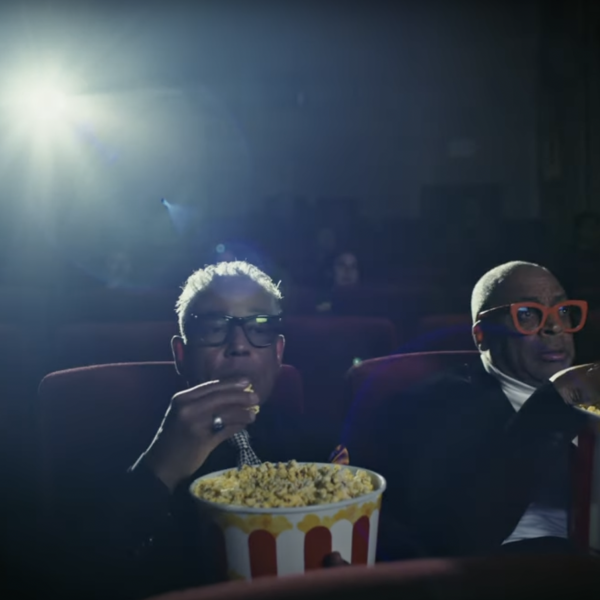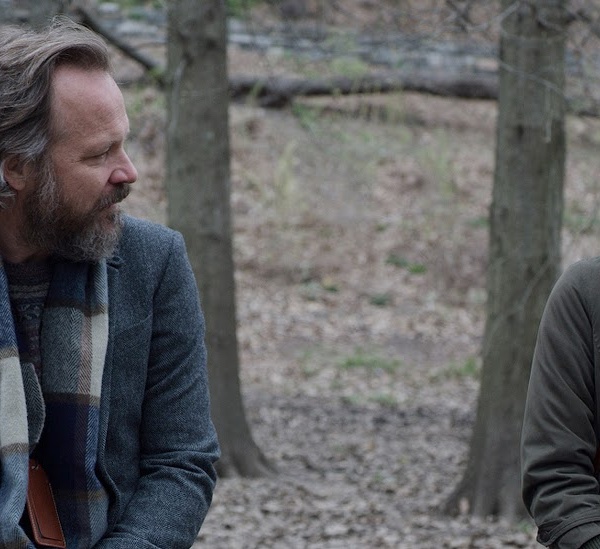British artist-turned-filmmaker Steve McQueen is tired of being defined by other people. Since he broke out with 2008’s Irish prison drama “Hunger” — along with Michael Fassbender — each film has been completely different from the last. “Shame” (2011) was a provocative portrait of a sex addict (Fassbender), while Best Picture winner “12 Years a Slave” (2013) turned Lupita Nyong’o into an Oscar-winning star and grossed $187.7 million worldwide. “Widows” (2018) was a less successful foray into an American genre picture. And back in Britain, his 2020 “Small Axe” limited TV series and 2023 documentary “Occupied City” earned raves.
“I don’t even try to be in my own box,” he told IndieWire during a Los Angeles interview. “My mother always told me, ‘Never let your left hand know what your right hand is doing.’ Someone blow the dust off of cinema because I don’t want to be stuffy. I want it to be entertaining in a way where people could actually live in it and go with it and have fun with it. It’s vital for our survival, that it doesn’t become opera, it needs to be more rock and roll, more hip hop. You live and die. I’m going to go out with two guns blazing. Love me or hate me. From the beginning, with ‘Hunger,’ I knew that could be my first film, and it could be my last. I’m going to do it my way. And if it’s the first film and last film, then fine.”
McQueen’s latest, “Blitz,” is no exception. The World War II adventure backed by Apple TV+ marks his biggest budget to date, his first collaboration with Working Title (“they have muscle,” he said), and a sincere expression of British nationalism. It started in 2006 whenvisiting artist McQueen was embedded with a team of British soldiers in Iraq for six days and was surprised by a surge of camaraderie with his fellow countrymen.
“Doing tours of duty is bloody weird,” McQueen said. “Bloody war. It doesn’t make any sense. There’s troops from Edinburgh, Newcastle, Southampton, Swansea, all over the U.K.. And for the first time in my life, I felt a sense of nationalism, and it was beautiful. At the same time, it was perverse because I was at war.”
McQueen returned to London and began researching the 1940 blitz when the city was pummeled by destructive Nazi bombs, night after night, as citizens sought cover underground and emerged to see if their homes were intact. And he found a photograph that inspired him of a small Black boy waiting at a train station with a too-big suitcase.
“Blitz” follows munitions factory worker Rita (Saoirse Ronan) and her biracial nine-year-old son George (Elliott Heffernan), who, when she sends him to the countryside for his safety, jumps off the train and heads back to London. For the rest of the movie, they try to find each other again. It’s a harrowing experience for both.
“Blitz” defies the norms of the World War II movie in several ways. First, we never see the invisible enemy. McQueen is focused on the women who kept the country running, not the men in uniforms fighting the war. “We have women who are the backbone emotionally and physically of the country,” McQueen said. “They’re looking after their elderly parents, they’re evacuating their children, and they’re working in munitions factories and aircraft hangars all around Britain, supplying the ammunition for men on the front line. These women had been neglected in the history of cinema.”

Not only that, he said, “there’s a situation of people of color. I’m more interested in life than I am in movies. And when you research, and you find out what happened, what was going on then, [it’s] so much more fascinating. And therefore, people have made choices of what to show and what not to show. So for me, this is so rich. Oh my God, these are the amazing images. These are the amazing stories. I feel vitalized as a filmmaker because these images have never been seen before, and [the movie is] saying something. It has come so much for me at the right time, what’s going on in Sudan, Ukraine, Lebanon, Israel, Palestine, and the recent [U.K.] race riots.”
“Blitz” opens with an astonishing scene of firefighters battling a raging fire without adequate equipment. They attempt to get control of a loose spitting firehose powered by surges of water. “The firehose was canvas,” said McQueen. “So the brass nozzle is leaking, the spitting serpent. They’re fighting a fire-breathing dragon with a water pistol. That is futile, but the brave people, that’s what we did.”
When he was writing the script, McQueen kept the family at the center of the narrative. “If you base it in love, then everything else is easy because that’s the core of the picture,” he said. “This picture is a family drama as well as an historical epic. So it contracts, hot and cold, hot and cold, but my job is to try to keep it all together. I knew I had the foundation of love. Everything’s easy; forget the scene in the underground, or the flooding, or whatever.”
From the opening night at the London Film Festival to the closing night of the New York Film Festival, said McQueen, “There’s not been a dry eye. And the emotion, the last 30 minutes on this picture, there’s hardly any speaking, there’s hardly any talking, nothing. It’s just this journey. You want him to get home. Everybody wants to come home. It’s about coming home.”
So McQueen mapped out this Xenophon odyssey stemming from George’s decision to take charge of his own narrative by jumping off the train. When he gets to London, finding his way back is not so easy, as he dodges air raids. In one stunning set piece, he’s exposed on a Thames barge and runs around a bridge dodging bullets and bombs. The film’s biggest engineering feat was the underground train tunnel that floods. And George is briefly kidnapped by a Dickensian den of thieves. One centerpiece set in the Café de Paris is based on truth: When the police entered a bombed-out nightclub full of dead patrons in evening clothes, some of the people picking over the macabre scene were severing fingers to knick jewelry.

Working with Oscar-winning production designer Adam Stockhausen (“The Grand Budapest Hotel”), McQueen placed the family in a tiny London house. “There’s a coziness to it,” he said. “So even when [Rita is] in bed with Elliott, there’s certain smallness about it, and from there, we can expand and wheel out.”
The movie looks at the world from George’s perspective. “It’s important that we could have a sober look at ourselves through a child’s eyes,” said McQueen. “It’s the only way you can do that. It’s a Brothers Grimm fairy tale. There are certain classical aspects to the storytelling.”
Casting Ronan was a no-brainer; she launched her career as a child actress and here understood the powerful parent-child bond. (The four-time nominee may wind up nominated for Supporting Actress, as she also has a Best Actress performance in “The Outrun.”) McQueen had to convince The Jam musician Paul Weller to play George’s grandfather. “He looked like that person from that period,” McQueen said. “And he could play piano, of course. And also, he is this beautiful soul. Paul has eight children. He has two Black children as well. So he understands all of that stuff. And he’s an authority in a way. I needed that sense of care, love, and tenderness. There was a 66-year-old man. There was this 29-year-old woman and this nine-year-old child, and they loved being together. They love playing together. They loved each other’s company. ‘Well, the camera is in focus, let’s go.’”
When McQueen saw Heffernan’s audition tape, he immediately had casting director Nina Gold bring him in and hired the acting rookie after he worked for a bit with an acting coach. “There was this stillness to him,” said McQueen, “his big eyes, and I’m looking at him thinking, ‘What’s going on his head?’ He magnetized. That’s the quality of a silent movie star. He brought everybody’s game up because you got to go to the kid’s level.”
McQueen does celebrate the way Britons came together to fight the Nazis, capturing a sincere sense of British stoicism and heroism. “That’s when we seem to have some common sense that we are one,” he said, “when you have an enemy. For some reasons, people get their heads together. I think of joy. It sounds corny when you say that. I thought about this movie, and I thought about adventure and people in the audience, and the thrills and spills of a movie, and them seeing themselves, and seeing London in a completely different way, and in a child’s eyes, because I knew that if you’re doing a child, everyone will identify with that child. They project themselves on that child. I want to have that magic on the screen for the audience and [for] people to go to cinema and be satisfied. It’s great to come out and anyone, if it’s highbrow, lowbrow, arthouse, mainstream, whatever, [is] talking about the movie in the way of enjoyment: to dance, to sing, to cry, to laugh, to fear.”
All of that is enhanced by the rousing score from two-time Oscar-winner Hans Zimmer (“The Lion King,” “Dune”), who will likely compete against his own “Dune: Part Two” at the Oscars this year. (Three-time nominee Nicholas Britell wrote the on-set music in “Blitz.”) McQueen had worked with both composers on “12 Years a Slave.” The score starts off with an orchestra of children’s recorders and then moves toward more orchestration through the journey.” Hans understood the story,” said McQueen, “because his mother was living in London during the blitz. And then as soon as this was over, she was evacuated to Germany. She went back and discovered her husband, Hans’ father. Five years after Hans was conceived, his father died, unfortunately, and he went to boarding school.”
As for the film’s release, while McQueen is grateful that Apple paid for “Blitz,” he’s not happy that the film is only getting three weeks of theatrical play. “I know this movie should be seen with an audience,” he said. “It uplifts your whole experience. I cannot say I’m not sad about it as a filmmaker.”
“Blitz” opens in select theaters on November 1 before streaming on Apple TV+ November 22.




